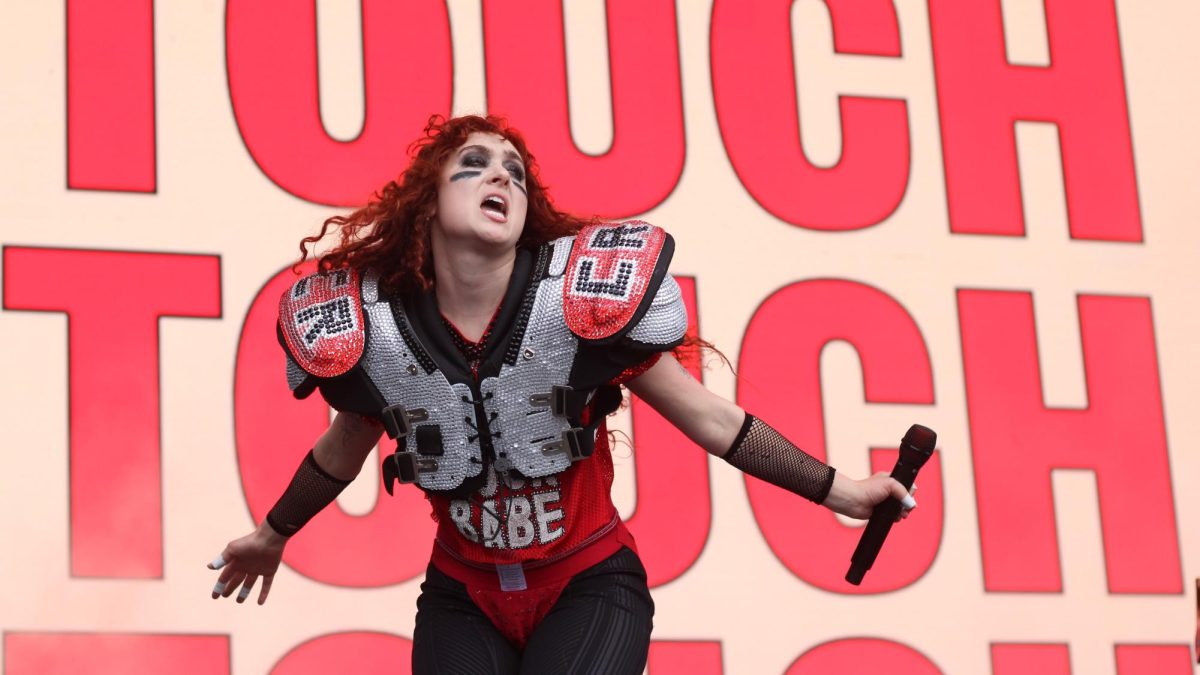Navigating Twitter is currently like walking through a minefield. Sixteen days after the election was officially called, Donald Trump is still dangerously claiming victory; Chris Pratt is being picked on by an army of teenage girls and now a picture of Harry Styles in a dress has sent conservative pundits into a tailspin.

After Styles became the first man to appear solo on Vogue’s cover for the December issue, popular conservative commentators on Twitter decided he was single-handedly erasing masculinity.
Political activist Candace Owens tweeted that “There is no society that can survive without strong men… The steady feminization of our men at the same time that Marxism is being taught to our children is not a coincidence. It is an outright attack. Bring back manly men.”
Ben Shapiro responded to Owens’ tweet with, “Anyone who pretends that it is not a referendum on masculinity for men to don floofy dresses is treating you as a full-on idiot.”
Of course, Styles isn’t the first rock star to wear a dress in front of a camera. David Bowie, Kurt Cobain and more wore dresses decades ago. But it is certainly not mainstream for men to wear dresses, especially in professional sectors.
In his Vogue interview, Styles said, “Clothes are there to have fun with and experiment with. What’s really exciting is that all of these lines are just kind of crumbling away. When you take away ‘There’s clothes for men and there’s clothes for women,’ you open up the arena in which you can play. I’ll go in shops sometimes, and I just find myself looking at the women’s clothes and think they’re amazing. It’s like anything—anytime you’re putting barriers up in your own life, you’re just limiting yourself.”
Such rigid lines around clothing and gender identity are a fairly recent development. In humanity’s ancient civilizations, most men and women wore skirts. Egyptian men wore loincloths and gauzy wraps; Greek and Roman men wore togas and Aztecs wore military wraps. Many ancient outfits included skirts because they were easy to construct and helped freedom of movement.
On the other hand, women didn’t start wearing pants until the 19th century, and it wasn’t commonplace until the mid-20th century.
Pants were first designed because they were practical. They covered up legs as protection from weather while still allowing for easy movement. But for women in the United States, Europe and beyond, pants came to represent power, equality and freedom from social and physical restrictions placed on them.
Considering Owens often shows up to red carpets in a pantsuit, it appears she supports that freedom from social restrictions when it benefits her.
Women wearing pantsuits is now commonplace, but it wasn’t always. In certain departments of our culture, it is still taboo. It’s considered progressive for Mormon women to wear pantsuits to church, for example.
LDS female missionaries had to wear skirts for almost their entire mission, including while riding bikes and proselytizing for hours, until a policy change in 2018 made pants acceptable.
Even with the policy change, female missionaries must still wear skirts or dresses to church.
Forcing people to dress according to gender stereotypes is a long-standing problem. But our expectations for gender performance have evolved over the past century.
It is more socially acceptable for women to perform masculine traits than for men to perform feminine traits because we still deem masculine traits as more desirable.
For example, girls are called tomboys if they exhibit energetic or boisterous behavior considered more typical of boys than of girls. The word isn’t necessarily used as an insult.
When men are insulted for being weak, scared or annoying, they are almost always compared to women through labels like sissy, pussy or bitch.
Since 1924, we’ve generally operated under Sigmund Freud’s assertion that biology is the key determinant of gender identity. But that’s slowly changing.
In a recent study conducted by the Intelligence Group, more than two-thirds of people ages 14 to 34 agree that gender does not have to define a person in the way it used to.
It’s no longer uncommon to see men wearing nail polish, women declining to wear makeup and people of all genders rejecting previously-accepted norms.
But that doesn’t mean everyone is on board. People of older generations especially are struggling to understand the defiance to follow outdated expectations.
Having such a mainstream artist appear on a major magazine cover in a dress forced the dialogue surrounding gender identity and clothing into national conversation.
Styles helms a list of mainstream artists breaking androgynous barriers—Halsey, Yungblud and Machine Gun Kelly, to name a few. These artists are able to express themselves so freely because queer people have been in this fight for decades.
Gender and sexual identities have placed restrictions on us for centuries. Breaking down the barriers is crucial for freedom of expression. Clothing doesn’t have a gender. Gender doesn’t have a set list of required personality traits.
Athletic girls are not tomboys, they are just girls. Emotional boys are not effeminate, they are just boys. And men in dresses are still men, even when Owens throws her fists in the air and says they’re not.


















